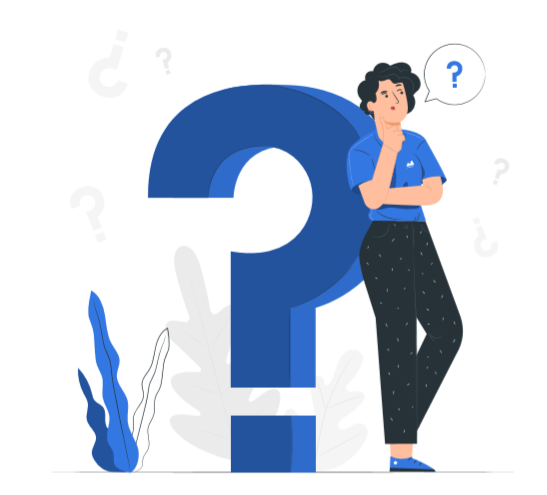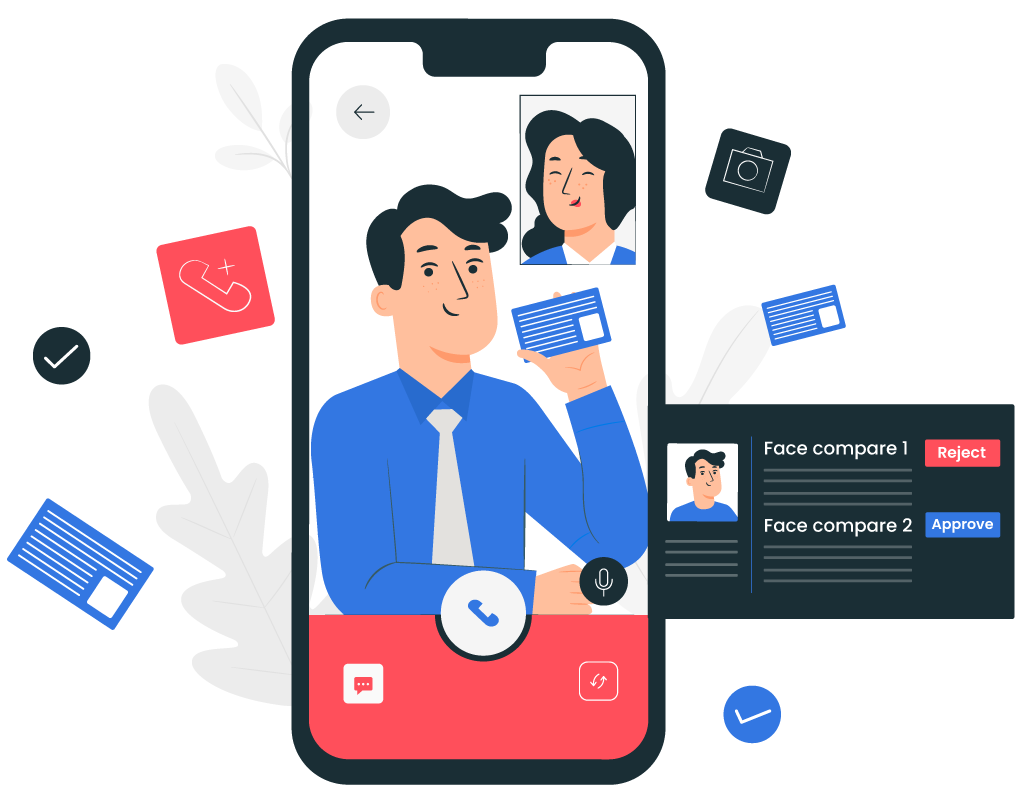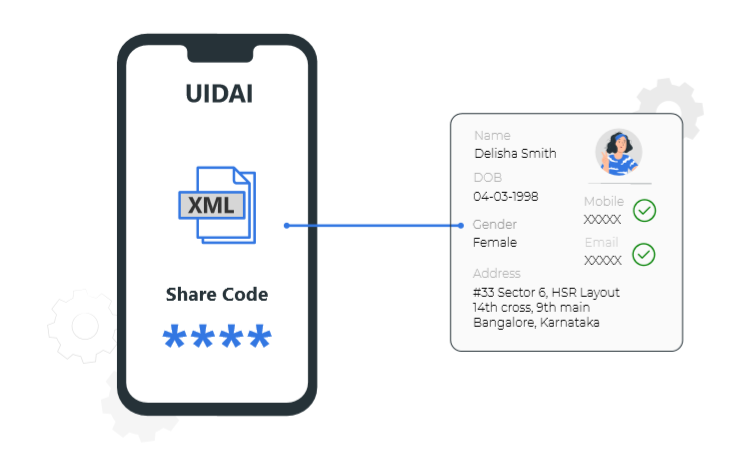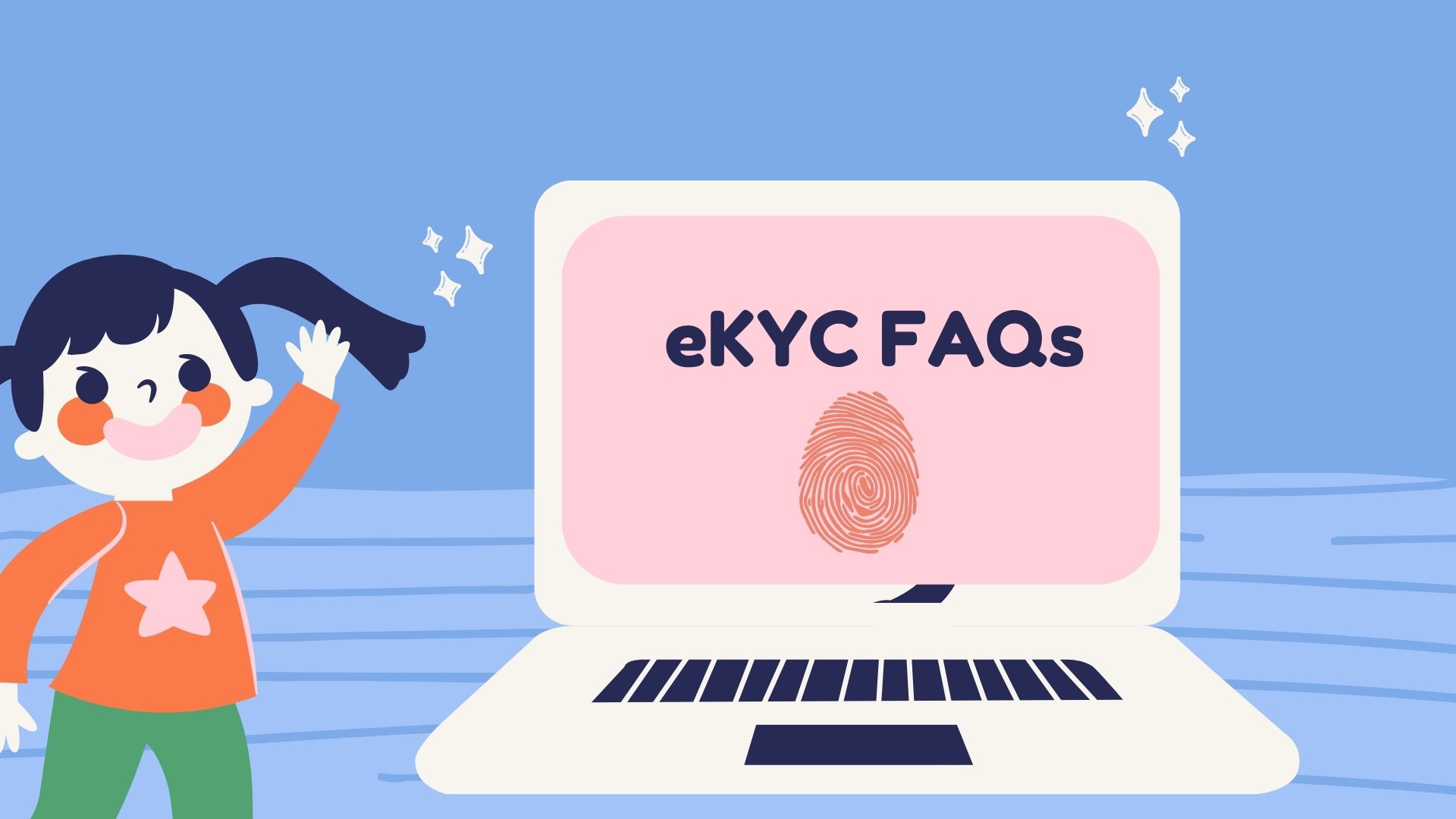If you are involved in the fintech industry e-KYC is probably the most common acronym you have heard. As is sometimes the case, the repetitiveness of a word causes more confusion than clarity. To help people with that, we present you with a list of some commonly asked questions (FAQs) about it. These questions are selected from Q&A sessions of our recently held webinar on e-KYC verification.

FAQs on KYC:
General FAQs
Q. Which institutions are referred as Regulated Entities under RBI?
Ans: The following instituions are considered Regulated Enities under RBI :
- a. All Scheduled Commercial Banks (SCBs)/ Regional Rural Banks (RRBs)/ Local Area Banks (LABs)/ All Primary (Urban) Co-operative Banks (UCBs) /State and Central Co-operative Banks (StCBs / CCBs) and any other entity which has been licensed under Section 22 of Banking Regulation Act, 1949, which as a group shall be referred as ‘banks’
- b. All India Financial Institutions (AIFIs)
- c. All Non-Banking Finance Companies (NBFCs), Miscellaneous Non-Banking Companies (MNBCs) and Residuary Non-Banking Companies (RNBCs).
- d. All Payment System Providers (PSPs)/ System Participants (SPs) and Prepaid Payment Instrument Issuers (PPI Issuers)
- e. All authorised persons (APs) including those who are agents of Money Transfer Service Scheme (MTSS), regulated by the Regulator
Q. Do I need to update or link my existing mobile number with my Aadhar Card for Aadhar based XML KYC?
Ans. Yes. To perform offline KYC, Aadhar card should be linked to the individual’s active mobile number . Please visit Aadhar website on how to link the Aadhar card with a preferred mobile number.
Q. How will an underage child’s data be captured in the Aadhar database?
Ans. For children below 5 years, no biometrics will be captured. Their UID be processed on the basis of demographic information and facial photograph linked with the UID of their parents. These children will need to update their biometrics of ten fingers, iris and photograph when they turn 5 and 15. Intimation to this effect will be mentioned in the original Aadhaar letter.
Q. As per SEBI the pan card should be validated with a KRA. Do you share the KRA information?
Ans. As per SEBI, PAN should be verified online using the Income Tax Database. As of now, we are performing OCR verification for PAN but we have the capability to perform PAN verification of both Individual and Company PAN through NSDL and MCA databases.
For more info on SEBI guidelines please go through the mentioned link.
Q. Does LeadSquared have the ability of verifying customer signature using AI/ML ?
Ans. Yes, it does. Our tech vendors have the capability to verify customer signature using Aadhar eSign technology.
FAQs on Video e-KYC
Q. What is Video KYC?
Ans. Video KYC allows a regulated entity to open an account-based relationship with a customer without meeting the customer face to face.
Q. What forms of ID are supported within Video KYC?
Banks can use either OTP based Aadhaar e-KYC authentication or Offline Verification of Aadhaar for customer identification. All other regulated entities can only do Aadhaar Offline verification.
Q. Can the customer record and upload Videos as part of Video KYC?
No. Real time video call should happen in the process of Video KYC verification.
Q. Who can perform the Video KYC process?
Ans. V-CIP process shall be operated by officials specifically trained for this purpose.
Q. Which details need to be provided during Video KYC call?
- Aadhaar XML file (by any regulated entity) or OTP based Aadhaar (only for Banks).
- Proof of possession of Aadhaar Number.
- A picture of the customer in the live video is captured.
- A picture of the PAN card is captured.
- The live location of the customer is captured and verified that the customer is physically present in India (geo tagging and verification).
- Random Checks carried out during the call need to be captured.
- Timestamps, geo locations and metadata related to the video call needs to be captured.
- Other documents such as DL, Voter ID, Passport can also be checked in this process but Aadhar XML and PAN card are the mandatory documents which needs to be authenticated.
Q. How do the Regulated Entities verify that the PAN or Aadhaar card belong to the prospect in the Video KYC?
Ans. The RBI encourages the use of advanced artificial intelligence solutions to match the image from PAN/Aadhaar to that of the image of the customer in the video call. This ensures that the customer is in possession of Aadhaar (by way of Aadhaar Offline), PAN card and that the details in PAN and Aadhaar match. In addition, the facial recognition and verification is also done with the PAN and Aadhaar image with a high degree of accuracy. This triangulation of checks ensures that the customer is legit. Any kind of spoofing or identity manipulation is quickly flagged for review.
Q. According to the provisions laid by RBI, the Aadhar card number needs to be redacted during video calls. How does Video KYC handle this limitation?
Ans. LeadSquared recommends all its clients not to ask their prospects/customers to show their Aadhar card during the video KYC because we prefer only Aadhar offline based XML for the verification i.e. for POA(Proof of address) document. Having said that, our partner’s Data Masking API will mask the Aadhaar Number If agent had taken any photo of Aadhar card as POA before Video KYC call. Other documents like PAN, Voter ID, Passport, DL

Q. Sometimes the images are very old in POI documents. What are the chances of false negatives due to mismatch in image and person’s face in video KYC?
Ans. There is a possibility for false negatives due to mismatch in image and person’s face due to various reasons. If an agent finds the mismatch then she can ask any other POA/POI documents such as Voter ID/Passport for further real time verification. At last, it will be agent’s decision to either reject or accept the KYC verification of the prospect.
Q. Can video KYC verification be done without the presence of an agent or manager? For instance, LeadSquared generates the score based on video KYC and shares it with the system for verification?
Ans. No. RBI clearly states that the verification should be happen in real time i.e. the Agent has to be present at the other end during the call. For more information, please refer the link given below.
https://www.rbi.org.in/Scripts/NotificationUser.aspx?Id=11783&Mode=0
Q. What is an OCR and how does it come into use for video KYC verification? What is the exact procedure?
Ans. An OCR is an Optical Character Reader, its main function is to scan the documents presented on screen and verify them during video KYC process. Before starting Video call, some of the documents are captured through prospect’s camera and OCR is performed on those captured photos. During video call also, some of the documents such as PAN card & photo is compared with the previous captured document for authentication.
Q. How are passports validated during this procedure?
Ans. As of now, only OCR algorithms are run to match the photo and signature of the prospect with the passport
Q. Does the prospect need to install any external application to participate in video KYC?
Ans. No. Video KYC call will happen through secured line from RE(Regulated Entity) domain
Q. How quickly can a manager reject a prospect in video KYC and instruct the agent to re-do?
Ans. As soon as the agent gives his disposition, manager can review that video kyc call and his documents instantaneously
Q. What happens when DOB is different in POI & POA?
Ans. It is entirely up to the agent to either accept or reject the KYC verification of the prospect in such cases.
Q. Is video KYC considered enough verification for opening a loan account?
Ans. Yes, it is considered as a full KYC and is enough verification for the aforementioned purpose. RBI mandate considers this method as one of the official CIP(Customer Identification Procedure). For more info, please go through the below link.
Link: https://www.rbi.org.in/Scripts/NotificationUser.aspx?Id=11783&Mode=0
Q. How is information being presented through AADHAR card, Voters ID & Passport doc verified in real time using LeadSquared? How is it ensured that IDs are not photoshopped, etc?
Ans. We validate the Aadhar XML file & its Digital signature. This way only the intended prospect can generate the XML file as it requires an OTP verification to be accessed. The One Time Password is sent only to the prospect’s Aadhar linked mobile number. We also use advanced recognition software to ensure that the documents being presented are genuine.
Q. Is the video e-KYC process documented?
Ans. Yes. Every interaction during the video e-KYC process is recorded.
Q. Does Offline Aadhar XML file provide photo for verification?
Ans. Yes, offline Aadhar XML contains photo of the individual so we can verify the prospect’s photo in real time in Video KYC call.
Q. Can you verify POI through Aadhaar if a prospect shows his Aadhaar card on screen and not by Offline XML Aadhaar file?
Ans. We are not allowed to do that. We need to verify offline Aadhar XML before video KYC call and we would not recommend the prospect to show her Aadhar card during the live video KYC call. The aforementioned is done keeping the RBI mandate in mind.
Q. What all types of Aadhaar KYC is permitted in Video KYC?
Ans. Aadhar offline XML KYC is permitted under Video KYC where you can use Aadhar card for both POA and POI verification

FAQs on Offline KYC:
Q. What is aadhar based Offline eKYC?
Ans. Aadhaar Paperless Offline e-KYC is a secure and shareable XML document which can be used by any Aadhaar holder for offline verification of identification.
Q. How to generate Aadhar offline XML file?
Ans. 1.Visit the Aadhar website(Link: https://resident.uidai.gov.in/offline-kyc).
2. Enter your Aadhaar/VID, create a Share Code of 4-characters.
3. A ZIP file containing the Resident’s Paperless Offline eKYC will be password protected using the same Share Code.
4. The file will be downloaded into the Resident’s device/desktop.
Q. What all information is contained in an Aadhaar Offline XML file?
Ans. Aadhar Offline XML file stores the following information:
- Resident Name
- Download Reference Number
- Address
- Photo
- Gender
- DoB/YoB
- Mobile Number (in hashed form)
- Email (in hashed form)
Q. How do I share this Paperless Offline eKYC document with the service providers?
Ans. Residents can share the e-KYC XML ZIP file along with the Share Code to the service provider as per their mutual convenience using any file-sharing means. The most common means to do it is e-mailing it to them.
Q. Can we do Aadhaar Offline KYC (XML) without being an NBFC?
Ans. As per UIDAI, Aadhar offline KYC can be used by any service provider. (Although, Offline KYC does not aim to be a replacement for in-person identification). The service provider should have provisions of providing this Aadhaar Paperless Offline e-KYC at their facility and do the offline verification. For more info, please visit below link
https://www.uidai.gov.in/contact-support/have-any-question/307-faqs/aadhaar-online-services/aadhaar-paperless-offline-e-kyc.html
Q. For XML based eKYC , can the share code be used multiple times?
Ans. You can use the share code multiple times. It is like a password to the prospect’s Aadhar XML file. Although, the XML file should not be older than three days to be considered legitimate.
Q. Please specify all demographic details we receive post online or Offline KYC.
Ans. We fetch Latitudinal and Longitudinal data of the prospect for identifying location after the e-KYC process. We also identify the location given in POA document.
Have some more questions that remain unanswered? Feel free to reach out to us or get our Free e-Book on e-KYC verification. Click this link to download it and resolve all your queries.










